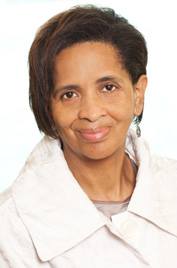Is Zoning Racist? Does It Have to Be?
/By John Michael McGrath
In a mayoral race that seems scripted by Twilight Zone screenwriters, it's sometimes difficult to remember all the minor and semi-major insanity along the way. One event in particular is likely only to be remembered by the hardest of hard-core nerds: the departure of campaign strategist Warren Kinsella from his quasi-official role with the Olivia Chow campaign. That's a shame, because Kinsella's exit from the race spoiled the chance to talk about some important elements of Toronto's policies.
In late August Kinsella was shown the door, if not pushed through it, after commenting that John Tory's transit plans wouldn't serve Toronto's priority neighbourhoods, which are de facto concentrations of visible minorities and poverty. “Is John Tory's SmartTrack, you know, Segregationist Track?” asked Kinsella, who quickly retracted and apologized. Perhaps in part because many Torontonians realized the accuracy of Kinsella's accusation, Tory has since amended his transit plan to unequivocally (as of publication time) include the already planned Sheppard and Finch LRTs, which would serve the neighbourhoods in question.
IIt's a shame that Kinsella made the accusation too ineptly for the Chow camp to exploit it. A real debate about the role of the City-as-government in making the city-as-place more welcoming and affordable for minorities is dearly needed. Moreover, Toronto's political left needs to acknowledge its role in building an increasingly exclusive, unaffordable city just as much as the right.
The facts are distressingly familiar: Toronto is increasingly stratified by income, race and class. We've known this at least since the Three Cities report in 2010. It's happening in a lot of places that fancy themselves “global cities,” including New York, Los Angeles, and Chicago.
The problem is well known and relatively well understood. The poor and working class are increasingly pushed to the economic and physical periphery of our cities while wealth floods back into newly desirable downtowns. Anyone who remembers what Kensington Market was like 15 years ago knows how dramatic this change can be. The harder question is what to do about it, because all the tools of your standard, 21st-century municipal government are designed to make it worse.
Building high-capacity transit into poor neighbourhoods may simply gentrify the poor out of them—unless we make high-capacity transit so abundant that easy access isn't a luxury. Affordable housing is an excellent idea and we need more of it, but don't kid yourself: municipal governments like building affordable housing in theory but are often unwilling to do so in practice. In Ottawa, a recently restored development charge for affordable housing was suspended because council was letting the money build up in the city's accounts without actually spending it. The City of Toronto has seen major cuts from the provincial and federal governments, which is a legitimate shame, but hasn't used its own levers to make up the difference either. There are plenty of political obstacles to actually spending money on social housing: housing money competes against other priorities like balanced budgets; developers and landlords can be leery of government interference; and cities are sometimes faced with the Hobson's choice of either making housing affordable or fighting homelessness (related, but not identical problems).
We get closer to the answer when we talk about “Inclusionary Zoning.” An increasingly popular measure on the left, IZ lets cities require that a certain number of units within a large development be affordable housing for low-income people, sometimes even artists. (NDP MPP Cheri DiNovo has repeatedly proposed expanding Ontario's planning law in this way, to no avail.) Here too, much good can be done but we often run aground on details. Witness the controversy around “poor doors” in New York, where the residents lucky enough to make it into affordable housing are given separate entrances from the people paying market rent. A development in Toronto's been accused of having a similar entrance. In at least one redevelopment, low-income residents requested separate entrances—to screw with our outrage, obviously.
However, municipal politicians of all stripes are loath to admit what the IZ concept implies: that the traditional urban planning, which makes up the bulk of city halls' work, is designed to be exclusionary in the literal sense. Right now, planning means keeping certain people away from certain places.
We dress that up in a number of ways, by fretting about “neighbourhood character” or “overdevelopment”, but the reality is that our planning laws function as tools for people who already own homes, as weapons against everyone who doesn't.
There's an interesting case in Thornhill, where a builder wants to develop shops and condo towers around an existing community centre marketed towards Muslims. The locals in the predominantly Jewish neighbourhood are vehemently opposed. Even if you assume there's no sectarian angle here (and for the record, the locals say their problem is density and overbuilding, not the faith of their prospective neighbours) there's a basic question of whose rights are paramount: the incumbent property owners, or a rapidly growing community which owns a parcel of land they'd like to have homes and shops on.
Should the would-be developers have to go elsewhere to spare their would-be neighbours the irritation? At least as importantly, where should they go? The GTA's greenbelt contains sprawl, thankfully, but also increases competition for the land within its bounds. The 21st century is going to be one of growing acrimony over already-settled urban space, instead of the 20th-century sprawl that was environmentally destructive but politically easy.
Multiply these decisions by thousands per year, and the segregation and stratification of our cities starts to seem less like a policy mystery and more like the obvious outcome of our preferences. Councillors and activists on both the left and right enjoy the catharsis of railing against greedy developers, and don't trouble themselves with the collateral damage of people who, unable to find single-family homes they can afford in an area they like, make do with higher prices and fewer choices.
The solutions aren't obvious, but most of them start with cities getting over their love of urban taxidermy and building more, and none of them start with freezing development, as seductive as that is to some. Not one of the US's expensive metros got that way because it built a lot of housing. Building more is also good for minorities. In the US, cities where building is easy tend to be less racially segregated. We can see this in the GTA, where cities that grew rapidly during particular waves of immigration have been reshaped by them (e.g. Brampton and South Asians, Markham and the Chinese). In New York, the Satmar Jewish community has managed to develop a ton of affordable housing because they're politically savvy enough to get the city to clear out the thicket of regulations.
One common objection to development is that fast-growing US cities may not be as racially segregated, but they can be segregated by wealth. However, the Pew Research survey that foundHouston to be the most wealth-segregated city didn't attribute the income inequality to growth. Given that income inequality is increasing in both fast- and slow-growing cities, that would be a hard case to make. And if you find income segregation distasteful in your city, consider that for many minorities, the alternative offered by slow-growing cities isn't the diverse neighbourhoods of a Jane Jacobs fairy tale: it's the impossibility of actually moving out of bad neighbourhoods. This American Life has the essay-length treatment of this, or you can listen to Chris Rock.
Growth doesn't need to mean the Manhattanization of Toronto (though I'm basically ambivalent about the height of buildings.) We could accomplish a lot by allowing streets of bungalows and detached homes to be rezoned for three-storey townhouses. And If you look around this city, you'll find plenty of old streets where three- and four-storey apartment buildings have long since become urban wallpaper—though they were thought to herald the end of the world back when the building permits were issued. As a bonus, building more affordable family-sized homes across the city instead of in a handful of condo clusters would help preserve Toronto's public schools.
For advanced credit, we could look at solutions like Germany's baugruppen, where in some cases as few as a dozen families have financed their own modest-but-dense developments with the help of decent, imaginative, progressive public policy.
Building more housing won't solve all the ills faced by the disenfranchised urban minorities, not by a long shot. It has nothing to say about racist policing or the shrinking middle class. But current policies are making thing worse than they need to and are justified with claims that don't stand up to evidence. We need to dismiss any argument that says we can have our cake and eat it, too: preserving the city in amber results in exactly the stratification we've seen. The point isn't to drop highrises everywhere, but to recognize that the status quo is unsustainable. The first step to building a city where we welcome anyone is to make room for everyone.












